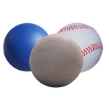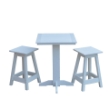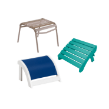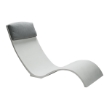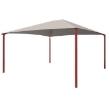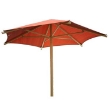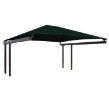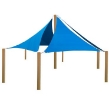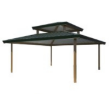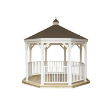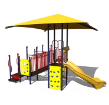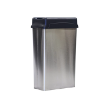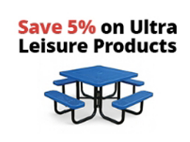Effective trash can placement is key to keeping public areas clean and inviting. By strategically positioning receptacles based on foot traffic and activity zones, you can maximize usage and reduce litter. Learn how smart placement strategies can transform cluttered parks into well-maintained, enjoyable spaces for everyone.
Comments (0)RSS
Blog
Commercial trash cans play a vital role in promoting recycling and sustainability. With the right design, placement, and clear signage, these receptacles can encourage proper sorting and disposal, helping businesses reduce waste and meet their environmental goals. Discover how to optimize waste management in your commercial space and support a cleaner, greener future.
Comments (0)Choosing the right material for commercial trash cans is crucial for balancing durability, cost, and sustainability. In this guide, we break down the pros and cons of plastic, metal, and composite trash cans, comparing factors like weather resistance, longevity, and eco-friendliness. Read on to find out which material best fits your public space's needs and aesthetic.
Comments (0)Choosing the right commercial trash cans can significantly enhance cleanliness, sustainability, and the overall image of your business. From sleek indoor options to durable outdoor models, each type serves a unique purpose for different environments. Explore this comprehensive guide to learn about the various types of commercial trash cans and how to select the best one for your facility’s needs.
Comments (0)Shade structures in parking lots offer more than just protection from the sun—they improve vehicle longevity, reduce energy consumption, and contribute to a greener environment. As parking lots evolve, modern shade systems also open doors to integrating smart technology and sustainable solutions. Discover how shade structures can enhance your property and learn the key benefits and considerations when selecting the right option for your parking facility.
Comments (0)When it comes to shade structures, wind resistance is just as crucial as sun protection, ensuring safety and longevity in outdoor spaces. Understanding how to choose the right design and materials can prevent costly damage and enhance the usability of your structures. Dive into our article to discover the importance of wind resistance in shade structure design and learn how to select the best options for your needs.
Comments (0)Protect your investment in commercial shade structures by exploring the benefits of implementing UV-resistant technologies. These innovative solutions not only enhance the durability of your shade assets but also reduce long-term maintenance and replacement costs. Read our guide to discover effective strategies for creating long-lasting, aesthetically pleasing shade solutions that withstand the elements.
Comments (0)Elevate your retail environment by understanding how shade structures can significantly enhance customer experience. Thoughtfully designed shade solutions not only improve comfort but can also encourage longer stays and increased sales. Dive into our article to learn about the best practices for planning and installing effective shade structures that will transform your outdoor space.
Comments (0)Transform your outdoor spaces with the perfect shade structures designed to enhance comfort and usability. Whether for parks, hotels, or private patios, the right shade solution can protect against the sun's harsh rays while elevating the aesthetic appeal of your environment. Explore our comprehensive guide to discover the best shade structures available and how to choose the ideal one for your specific needs and budget.
Comments (0)Ensure your shade structures stand the test of time with our essential guide on determining the proper depth for installation. Understanding the right footing and foundation depth is crucial for stability and durability, especially in varying weather conditions. Dive into our comprehensive resource to explore material recommendations, regional considerations, and best practices that will optimize your shade structures for lasting performance and value.
Comments (0)Blog search
Blog archive
- 2025
- 2024
- 2023
- 2022
- 2021
- 2020
- 2019
- 2018
- 2017

















